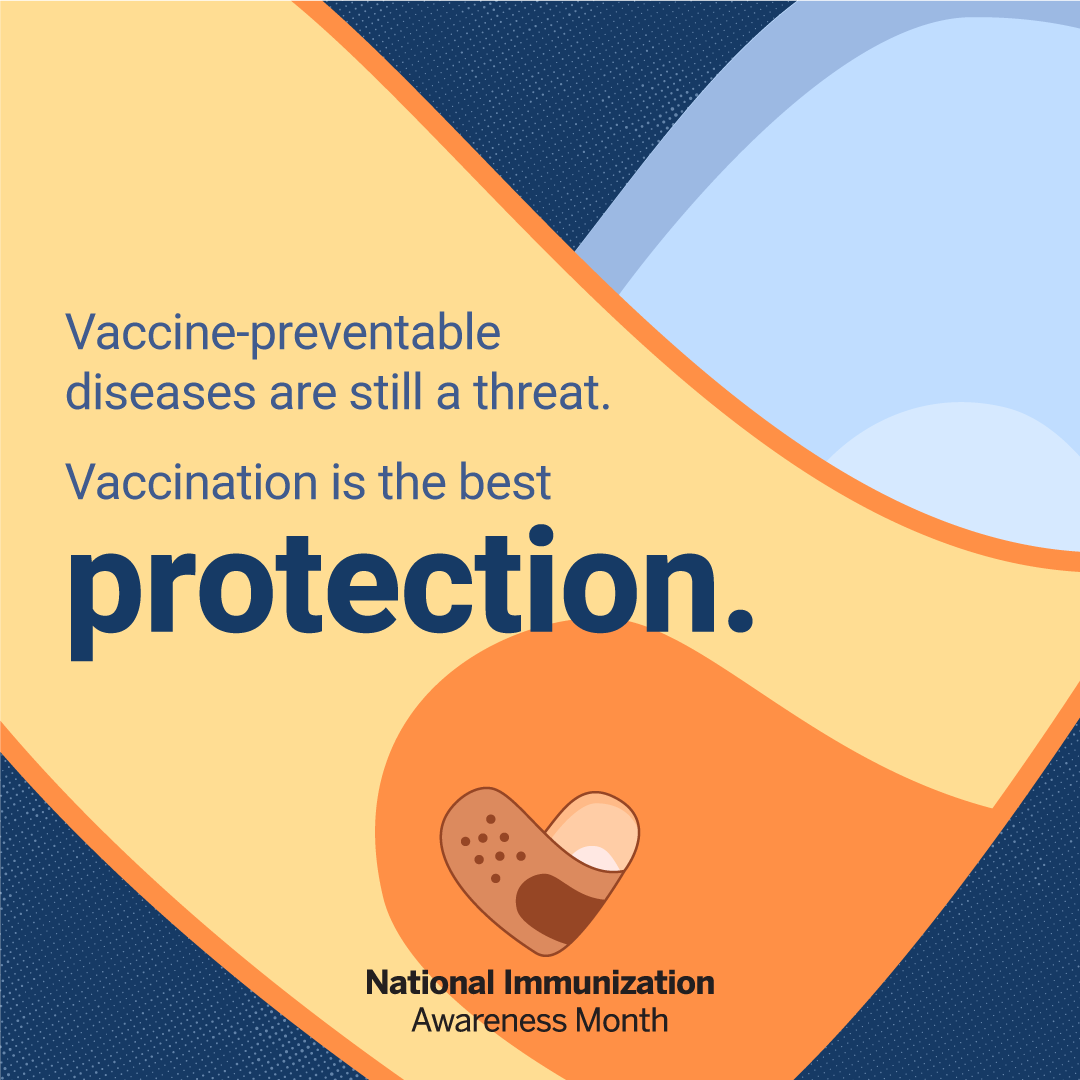In the United States, August is National Immunization Awareness Month (NIAM)! During this time, health care providers, educators, and advocates use their resources to inform the public about the  safety and importance of vaccines. NIAM was established by the Centers for Disease Control and Prevention (CDC) to encourage individuals of all ages to stay up-to-date with their vaccines and make sure that they are protected. The modern hepatitis B vaccine has been widely used – with over 1 billion doses given – since it was created in 1985, and has been proven to be one of the safest and most effective vaccines in the world. So why do we need to promote the hepatitis B vaccine during NIAM?
safety and importance of vaccines. NIAM was established by the Centers for Disease Control and Prevention (CDC) to encourage individuals of all ages to stay up-to-date with their vaccines and make sure that they are protected. The modern hepatitis B vaccine has been widely used – with over 1 billion doses given – since it was created in 1985, and has been proven to be one of the safest and most effective vaccines in the world. So why do we need to promote the hepatitis B vaccine during NIAM?
United States:
On a national level, vaccination rates for hepatitis B are far below where they should be despite being the most effective way to prevent transmission. In the United States, while 91% of children complete the hepatitis B vaccine series, only 64% of children who are born in hospitals are given the hepatitis B birth dose (first dose of the vaccine) as recommended by the CDC – which means that there is much room for improvement. And without the follow-up doses, children are still vulnerable to potential exposures; one dose of the vaccine is not enough.
Adults in the United States have extremely low rates of vaccination, primarily because many were born before the vaccine became a healthcare standard and mandated for school. According to the CDC, just 25% of adults have received all three doses. Coupled with the recent increase in injection drug use, low vaccination rates among adults have been driving a rise in acute hepatitis B cases across the nation. The good news is that adults can be fully vaccinated with just 2 doses of the Heplisav-B vaccine! This new vaccine has proven to be highly effective and can be completed in just one month.
Globally:
Internationally, vaccine rates differ from country to country due to issues with storage, access, affordability, general awareness and priorities. In July 2019, the World Health Organization (WHO) announced that 189 countries now provide the vaccine for infants on a national level, but the global coverage of the birth dose is just 42%. The birth dose is significant for a number of reasons. Ninety percent of babies and up to 50% of young children will progress to chronic hepatitis B if they are infected. Since only 10% of the 292 million chronically infected individuals know about their infection, there is the potential for friends or family members to unknowingly transmit the virus to an infant or young child. In addition, a mother who is unaware of her status has the potential to pass the virus to her newborn via the delivery process. The birth dose significantly lowers the risk of transmission in both of the previous scenarios. That is why it is critical pregnant women are tested early in their pregnancy so they are aware of their infection and can ensure the birth dose is available.
In some countries, the pentavalent vaccine is offered. This vaccine protects against five diseases, including hepatitis B. However, it cannot be administered until the baby is at least 6 weeks old, which leaves a gap in the baby’s protection. The monovalent hepatitis B vaccine should be given to all infants in order to make sure they are covered during this vulnerable time period. It is especially important for infants born to hepatitis B surface antigen positive (HBsAg +) mothers to receive the monovalent vaccine within 12-24 hours of birth to prevent transmission.
Vaccines are also essential for healthcare workers. WHO estimates that out of the 3 million healthcare workers who are exposed to bloodborne diseases a year, approximately 2 million of those exposures are to hepatitis B. These exposures, which largely occur in countries where hepatitis B is common, put unvaccinated healthcare workers at risk. International recommendations list hepatitis B as one of the essential vaccines for health occupations. WHO also reports that unsanitary healthcare practices, such as reusing sharp objects that have not been sterilized following proper infection control practices, were responsible for nearly 2 million hepatitis B infections globally in 2010. Infections from an accidental exposure can easily be avoided with the vaccine!
NIAM is a reminder that a vaccine is only effective at preventing disease when it is used widely. Governments, healthcare providers, and individuals all play an important role in ensuring that people of all ages – especially high-risk individuals – are protected. You can do your part today by asking your doctor for the 3-panel hepatitis B blood test. If your results come back negative (HBsAg -, HBsAb -, and HBcAb -), ask them to begin the vaccination series! In two or three simple doses, you can be protected from the largest risk factor for liver disease and liver cancer!

